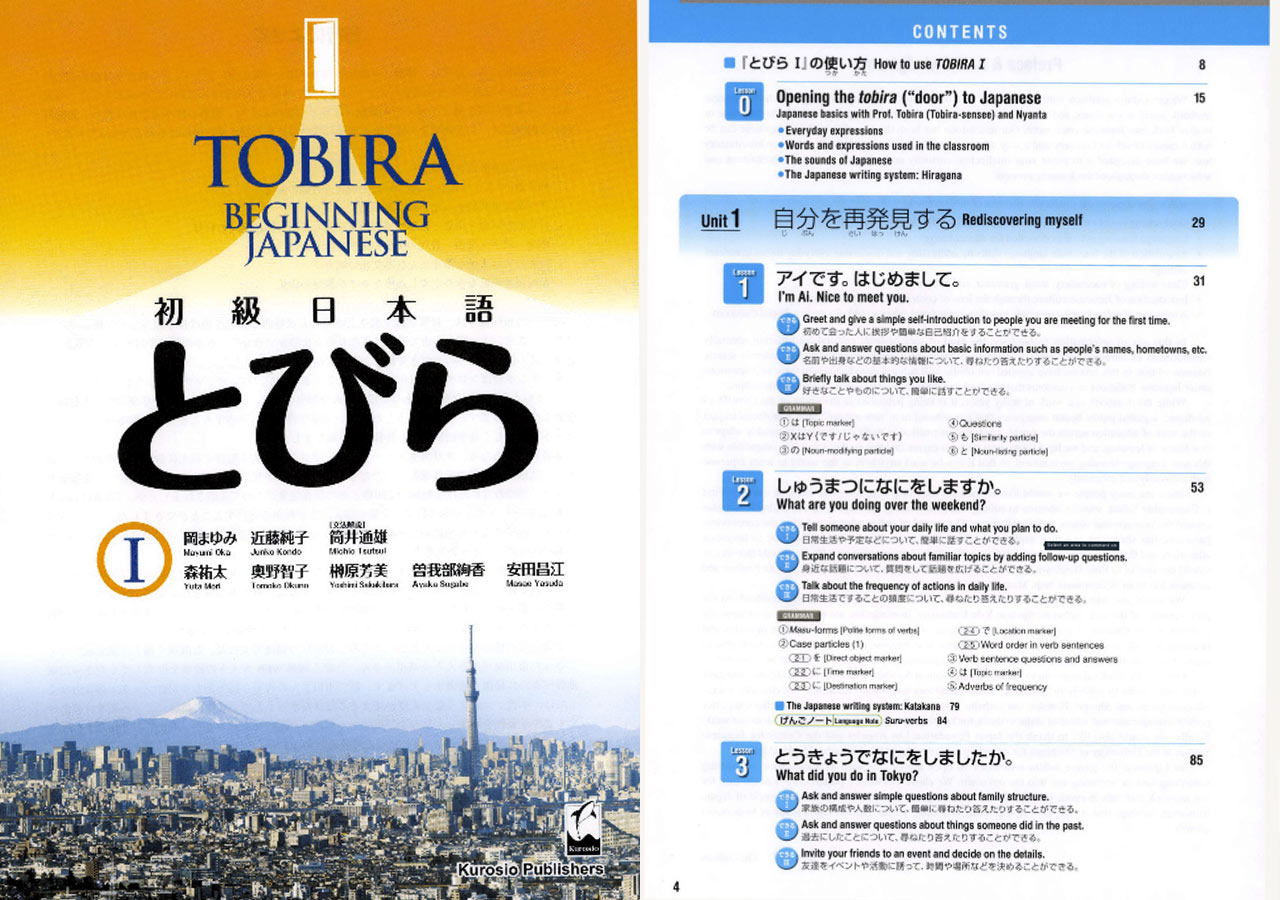
This long-awaited text is the beginner-level version of the infamous Tobira: Gateway to Advanced Japanese textbook. In typical Tobira fashion, the content is highly organized and packed with information. With this beginner text, the authors attempted to create a curriculum for "digital natives," by utilizing a lot of online and interactive resources — the Covid-19 pandemic was mentioned as part of the reason for this strong technological integration. The writing is academic, yet playful at times, thanks to the characters included throughout the text — Nyanta (a cat), Tobira-sensei (a floating, sentient computer screen character of sorts), and others. Some learners may be put off by the sheer amount of text and rigid design of this book. It's a typical college classroom Japanese textbook that almost reminds you of the Yōkoso or Nakama series. While it's not impossible to use it for self-study, this text seems to be most suited for guided learning in a classroom setting.

The Tobira 1 book is made up of 10 lessons, which are further divided into 3 units. Every unit contains 3 to 4 lessons that integrate related grammar and around 70 vocabulary words and phrases. Unit 1, for example, is called "Rediscovering Myself," and has 3 lessons about first introductions, asking what one is doing over the weekend, and talking about what someone did during their trip to Tokyo. Each lesson opens with a Dekiru List, which is just a list of goals or linguistic objectives for the learner.
Vocabulary is presented in two parts: the first part contains visuals while the second part is a simple vocabulary list. Pitch accent is also a strong focus in this text — every new vocabulary word is presented with lines above mora (the Japanese equivalent of syllables) to indicate a high pitch on that mora. The grammar presented in each lesson contains a breakdown of a key sentence along with an explanation and plenty of example sentences, which are great for sentence mining. Tobira 1 even has a QR code feature to bring you to their website for additional content such as in-depth grammar explanations. Lessons end with speaking, reading, and listening practice (in that order). After Lesson 1, romaji for words in hiragana stops. And after Lesson 2, they stop for katakana too. Kanji study begins from Lesson 3 onward. At the end of Tobira 1, you will learn all of hiragana, katakana, and 139 basic kanji.
If you enjoy a highly structured curriculum with a rustic, wordy design, then Tobira 1: Beginning Japanese may be just the text for you. This textbook really has everything one needs to go from level 0 to the end of the beginner level, and on to intermediate. The online integration is a nice feature but is definitely not necessary for a complete learning experience. And at 3,850 yen on Amazon Japan, the price is definitely worth what you are getting.